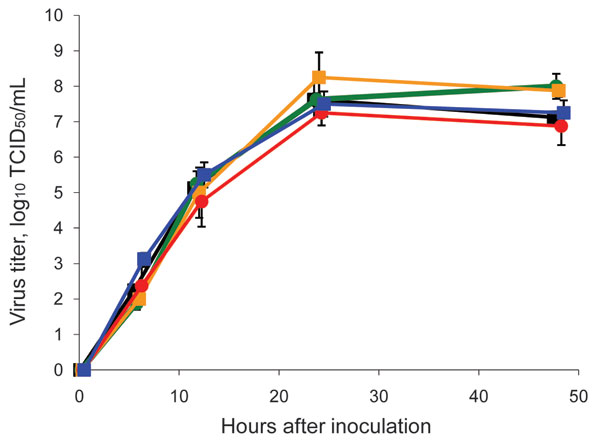Volume 17, Number 2—February 2011
Research
Possible Increased Pathogenicity of Pandemic (H1N1) 2009 Influenza Virus upon Reassortment
Figure 1

Figure 1. Replication of wild-type and reassortant pandemic (H1N1) 2009 viruses in MDCK cells. MDCK cells were injected in duplicate with 0.01 50% tissue culture infective dose (TCID50) per cell of each virus: black, wild-type pandemic (H1N1) 2009; red, reassortant pandemic (H1N1) 2009–seasonal influenza (H1N1) basic polymerase (PB) 2 acidic polymerase; blue, reassortant pandemic (H1N1) 2009–seasonal influenza (H1N1) PB2; green, reassortant pandemic (H1N1) 2009–seasonal influenza (H3N2) PB1 neuraminidase (NA); orange, reassortant pandemic (H1N1)–seasonal influenza (H3N2) NA. Supernatant samples were harvested 6, 12, 24 and 48 h after injection. Supernatant samples were titrated in MDCK cells. Geometric mean titers and standard deviation were calculated from 2 independent experiments.